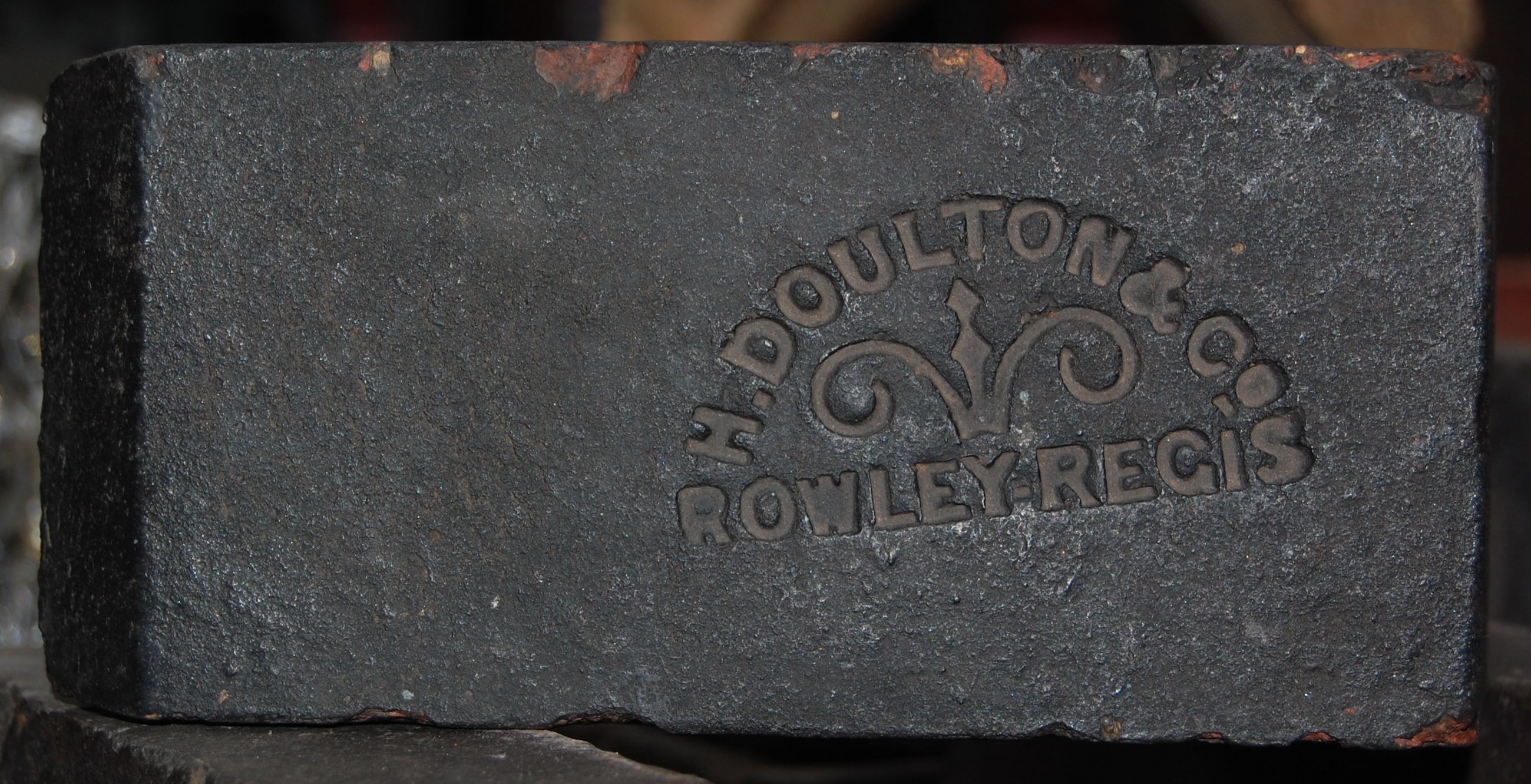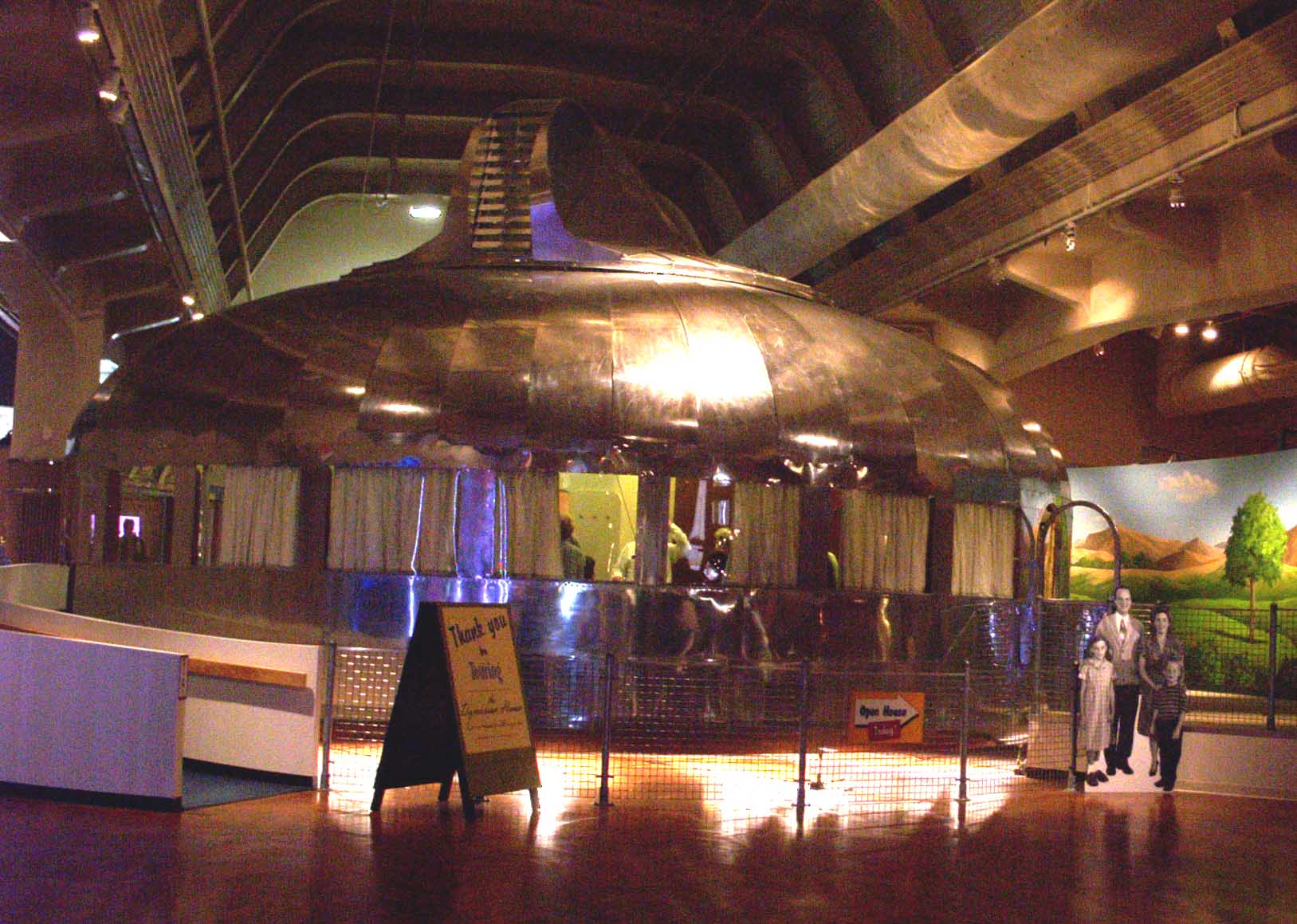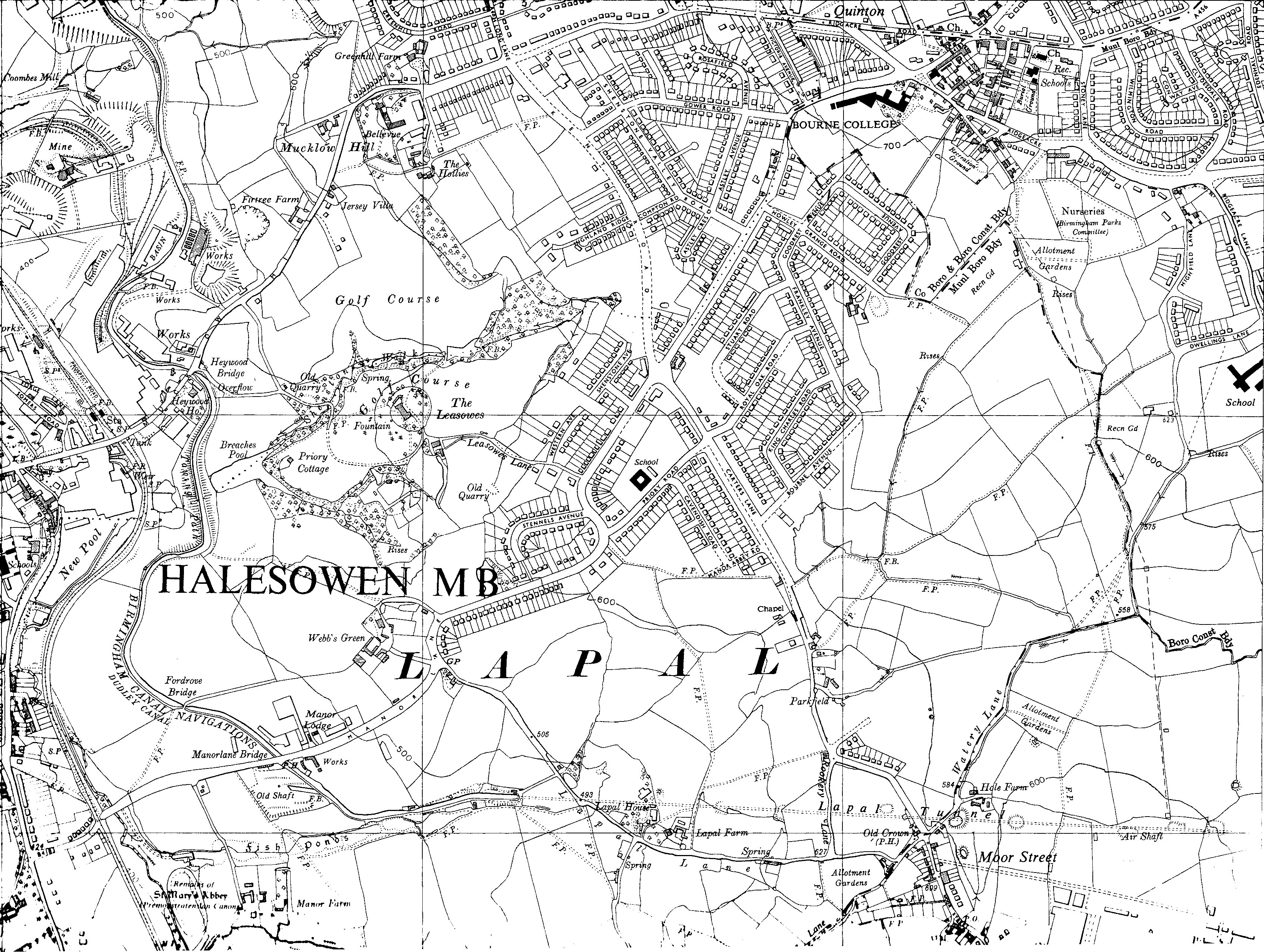|
Cobb's Engine House
Cobb's Engine House (properly known as Windmill End Pumping Station) in Rowley Regis, West Midlands, England, is a scheduled ancient monument and a Grade II listed building built around 1831. It housed a stationary steam pump used to pump water firstly from Windmill End Colliery and later other mines in the area. Utilizing a shaft 525 feet deep, 1,600,000 litres of water were pumped from the mines into the canal daily. It ceased work in 1928 and the Newcomen type engine was moved to the Henry Ford Museum in Dearborn, Michigan in 1930. The engine house originally had a cylinder floor at ground level and two floors above but they and the roof have gone, leaving the building as a shell. The chimney stands high and is at the base, successively narrowing to at the top. It stands near Windmill End Junction in the Warren's Hall local nature reserve, where the Dudley No. 2 Canal and the Boshboil Arm meets the southern end of the Netherton Tunnel Branch Canal. The area came into th ... [...More Info...] [...Related Items...] OR: [Wikipedia] [Google] [Baidu] |
Cobb's Engine House
Cobb's Engine House (properly known as Windmill End Pumping Station) in Rowley Regis, West Midlands, England, is a scheduled ancient monument and a Grade II listed building built around 1831. It housed a stationary steam pump used to pump water firstly from Windmill End Colliery and later other mines in the area. Utilizing a shaft 525 feet deep, 1,600,000 litres of water were pumped from the mines into the canal daily. It ceased work in 1928 and the Newcomen type engine was moved to the Henry Ford Museum in Dearborn, Michigan in 1930. The engine house originally had a cylinder floor at ground level and two floors above but they and the roof have gone, leaving the building as a shell. The chimney stands high and is at the base, successively narrowing to at the top. It stands near Windmill End Junction in the Warren's Hall local nature reserve, where the Dudley No. 2 Canal and the Boshboil Arm meets the southern end of the Netherton Tunnel Branch Canal. The area came into th ... [...More Info...] [...Related Items...] OR: [Wikipedia] [Google] [Baidu] |
Rowley Regis
Rowley Regis ( ) is a town and former municipal borough in Sandwell in the county of the West Midlands, England. It encompasses the three Sandwell council wards of Blackheath, Cradley Heath and Old Hill, and Rowley. At the 2011 census, the combined population of these wards was 50,257. History The history of Rowley Regis can be traced back to the 12th century, when a small village grew around the parish church of St. Giles, southeast of Dudley. Rowley was part of the Royal hunting grounds - Regis was added to the name of Rowley in around 1140 to signify it was that part of Rowley belonging to the King. It began to develop substantially during the 19th century. In 1933, Rowley Regis became a borough, and incorporated the communities of Blackheath, Old Hill, and Cradley Heath. These places were all within the ancient parish of Rowley Regis, which (despite being in the county of Staffordshire) was in the diocese of Worcester. The parish contained the manors of Rowley Regis and ... [...More Info...] [...Related Items...] OR: [Wikipedia] [Google] [Baidu] |
West Midlands (county)
West Midlands is a metropolitan county in the West Midlands Region, England, with a 2021 population of 2,919,600, making it the second most populous county in England after Greater London. It was created in 1974 by the Local Government Act 1972, from parts of Staffordshire, Worcestershire and Warwickshire. The county is a NUTS 2 region within the wider NUTS 1 region of the same name. It embraces seven metropolitan boroughs: the cities of Birmingham, Coventry and Wolverhampton, and the boroughs of Dudley, Sandwell, Solihull and Walsall. The county is overseen by the West Midlands Combined Authority, which covers all seven boroughs and other non-constituent councils, on economy, transport and housing. Status The metropolitan county exists in law, as a geographical frame of reference, and as a ceremonial county. As such it has a Lord Lieutenant. and a High Sheriff. Between 1974 and 1986, the West Midlands County Council was the administrative body covering the county; t ... [...More Info...] [...Related Items...] OR: [Wikipedia] [Google] [Baidu] |
Scheduled Ancient Monument
In the United Kingdom, a scheduled monument is a nationally important archaeological site or historic building, given protection against unauthorised change. The various pieces of legislation that legally protect heritage assets from damage and destruction are grouped under the term "designation." The protection provided to scheduled monuments is given under the Ancient Monuments and Archaeological Areas Act 1979, which is a different law from that used for listed buildings (which fall within the town and country planning system). A heritage asset is a part of the historic environment that is valued because of its historic, archaeological, architectural or artistic interest. Only some of these are judged to be important enough to have extra legal protection through designation. There are about 20,000 scheduled monuments in England representing about 37,000 heritage assets. Of the tens of thousands of scheduled monuments in the UK, most are inconspicuous archaeological sites, but ... [...More Info...] [...Related Items...] OR: [Wikipedia] [Google] [Baidu] |
Newcomen Steam Engine
The atmospheric engine was invented by Thomas Newcomen in 1712, and is often referred to as the Newcomen fire engine (see below) or simply as a Newcomen engine. The engine was operated by condensing steam drawn into the cylinder, thereby creating a partial vacuum which allowed the atmospheric pressure to push the piston into the cylinder. It was historically significant as the first practical device to harness steam to produce mechanical work. Newcomen engines were used throughout Britain and Europe, principally to pump water out of mines. Hundreds were constructed throughout the 18th century. James Watt's later engine design was an improved version of the Newcomen engine that roughly doubled fuel efficiency. Many atmospheric engines were converted to the Watt design, for a price which was based on a fraction of the fuel-savings. As a result, Watt is today better known than Newcomen in relation to the origin of the steam engine. Precursors Prior to Newcomen a number of s ... [...More Info...] [...Related Items...] OR: [Wikipedia] [Google] [Baidu] |
The Henry Ford
The Henry Ford (also known as the Henry Ford Museum of American Innovation and Greenfield Village, and as the Edison Institute) is a history museum complex in the Detroit suburb of Dearborn, Michigan, Dearborn, Michigan, United States. The museum collection contains the SS-100-X, presidential limousine of John F. Kennedy, Abraham Lincoln's chair from Ford's Theatre, Thomas Edison's laboratory, the Wright Brothers' bicycle shop, the Rosa Parks bus, and many other historical exhibits. It is the largest indoor–outdoor museum complex in the United States and is visited by over 1.7 million people each year. It was listed on the National Register of Historic Places in 1969 as Greenfield Village and Henry Ford Museum and designated a National Historic Landmark in 1981 as "Edison Institute". Museum background Named for its founder, the automobile industrialist Henry Ford, and based on his efforts to preserve items of history, historical interest and portray the Industrial Revolution, the ... [...More Info...] [...Related Items...] OR: [Wikipedia] [Google] [Baidu] |
Dearborn, Michigan
Dearborn is a city in Wayne County in the U.S. state of Michigan. At the 2020 census, it had a population of 109,976. Dearborn is the seventh most-populated city in Michigan and is home to the largest Muslim population in the United States per capita. It also is home to the largest mosque in the United States. First settled in the late 18th century by ethnic French farmers in a series of ribbon farms along the Rouge River and the Sauk Trail, the community grew in the 19th century with the establishment of the Detroit Arsenal on the Chicago Road linking Detroit and Chicago. In the 20th century, it developed as a major manufacturing hub for the automotive industry. Henry Ford was born on a farm here and later established an estate in Dearborn, as well as his River Rouge Complex, the largest factory of his Ford empire. He developed mass production of automobiles, and based the world headquarters of the Ford Motor Company here. The city has a campus of the University of Mich ... [...More Info...] [...Related Items...] OR: [Wikipedia] [Google] [Baidu] |
Michigan
Michigan () is a state in the Great Lakes region of the upper Midwestern United States. With a population of nearly 10.12 million and an area of nearly , Michigan is the 10th-largest state by population, the 11th-largest by area, and the largest by area east of the Mississippi River.''i.e.'', including water that is part of state territory. Georgia is the largest state by land area alone east of the Mississippi and Michigan the second-largest. Its capital is Lansing, and its largest city is Detroit. Metro Detroit is among the nation's most populous and largest metropolitan economies. Its name derives from a gallicized variant of the original Ojibwe word (), meaning "large water" or "large lake". Michigan consists of two peninsulas. The Lower Peninsula resembles the shape of a mitten, and comprises a majority of the state's land area. The Upper Peninsula (often called "the U.P.") is separated from the Lower Peninsula by the Straits of Mackinac, a channel that joins Lak ... [...More Info...] [...Related Items...] OR: [Wikipedia] [Google] [Baidu] |
Warren's Hall Country Park
Warren's Hall Country Park (also known as Warren's Hall Local Nature Reserve) is a local nature reserve situated in Sandwell Metropolitan Borough in the West Midlands of England. It lies next to Bumble Hole Local Nature Reserve. It includes ponds, canals, grassland, small wooded areas and the entrance to Netherton Canal Tunnel. History The area comprising the Warren's Hall Local Nature Reserve—like that of its immediate neighbour, the Bumble Hole Local Nature Reserve—was once was a scene of industry, including coal mining. The reserve is laid out partly on farmland and partly on the sites of Windmill Hill and Warren's Hall collieries. The most obvious remains from this period include Cobb's Engine House and the Dudley No. 2 Canal, including the entrance to Netherton Tunnel. The area was declared a local nature reserve in 1996. Location The reserve is to the east of Netherton, about 1.5 miles south of Dudley, on the border with Dudley Metropolitan Borough The Metrop ... [...More Info...] [...Related Items...] OR: [Wikipedia] [Google] [Baidu] |
Dudley Canal
The Dudley Canal is a canal passing through Dudley in the West Midlands of England. The canal is part of the English and Welsh connected network of navigable inland waterways, and in particular forms part of the popular Stourport Ring narrowboat cruising route. The first short section, which connected to the Stourbridge Canal, opened in 1779, and this was connected through the Dudley Tunnel to the Birmingham Canal system in 1792. Almost immediately, work started on an extension, called Line No. 2, which ran through another long tunnel at Lapal, to reach the Worcester and Birmingham Canal. This was completed in 1798, but significant trade had to wait until the Worcester and Birmingham was completed in 1802. In 1846, the company amalgamated with the Birmingham Canal Navigations, and various improvements followed, including the Netherton Tunnel, of a similar length to the Dudley Tunnel, but much bigger, with towpaths on both sides and gas lighting. It was the last canal tunnel bui ... [...More Info...] [...Related Items...] OR: [Wikipedia] [Google] [Baidu] |
Netherton Tunnel Branch Canal
Netherton Tunnel Branch Canal, in the West Midlands county, England, is part of the Birmingham Canal Navigations, (BCN). It was constructed at a 453–foot elevation, the Wednesbury or Birmingham level; it has no locks. The total length of the branch canal is and the canal tunnel is long. Netherton Tunnel was the last canal tunnel to be built in Britain during the Canal Age. The first sod was turned by the Lord Ward on 31 December 1855 and the canal opened on 20 August 1858, providing a waterway connection between the Black Country towns of Netherton and Tipton. It was built to relieve the bottleneck of the adjacent Dudley Tunnel which is very narrow, has alternating blocks of one-way working, and had waiting times of eight hours or more, and sometimes several days. The Netherton tunnel was built with a width of to allow two-way working of narrowboats; and is brick lined throughout. It has towpaths running through it, one on each side, which enabled horse-drawn narrowboats ... [...More Info...] [...Related Items...] OR: [Wikipedia] [Google] [Baidu] |
Sir Horace St Paul, 1st Baronet
Sir Horace David Cholwell St Paul, 1st Baronet (6 January 1775 – 8 October 1840) was an English soldier and Member of Parliament. He was born in Paris, the eldest son of Horace St. Paul of Ewart Park, Northumberland. His younger brother was Henry St Paul, MP for Berwick-upon-Tweed from 1812 to 1820. It would be hard to describe St. Paul's background more clearly than R.G. Thorne does: 'St. Paul's father, a Northumbrian gentleman driven into exile after killing a man in a duel, was a soldier of fortune in the Seven Years' War, who returned to England with an Austrian title and a royal pardon, subsequently distinguishing himself in diplomacy, before retiring to his ancestral home.' St Paul was educated at Houghton le Spring and Eton College (1783). He succeeded his father in 1812 as a count of the Austrian Empire. He joined the British Army as an ensign in the 1st Foot regiment in 1793, and was promoted to lieutenant in 1794. He transferred to the 1st Dragoon Guards as a cornet ... [...More Info...] [...Related Items...] OR: [Wikipedia] [Google] [Baidu] |






